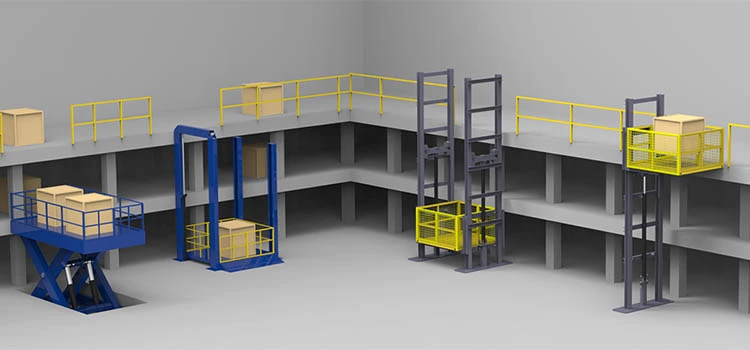Leading Lift Companies in London: Offering Quality Installations and Upkeep
Leading Lift Companies in London: Offering Quality Installations and Upkeep
Blog Article
Looking Into the Globe of Lifts: Typical Problems Dealt With by Different Lift Systems
As we browse with the upright transportation systems of modern structures, lifts stand apart as a vital element of our day-to-days live. Nevertheless, behind their seamless operation lies a world of elaborate devices that can often experience challenges. From hydraulic elevators to traction systems and machine-room-less designs, each lift kind includes its collection of typical problems. Understanding these obstacles is critical for guaranteeing the smooth functioning of these crucial systems. Let's discover the complexities that underlie the procedure of elevators and the potential issues that can emerge, shedding light on the elaborate web of lift mechanisms.
Hydraulic Lifts
Hydraulic lifts, commonly liked for low-rise structures, utilize fluid pressure to manage the activity of the lift cars and truck (lift repair companies). This device involves a hydraulic pump pushing oil into a cyndrical tube, causing the elevator to move in the preferred instructions. While hydraulic lifts are known for their smooth and peaceful operation, they do come with their own collection of common issues
One prevalent trouble with hydraulic lifts is oil leak. Additionally, concerns with the control system, such as faulty shutoffs or a malfunctioning pump, can create disturbances in the lift's activity.
Normal upkeep and timely repair services are important to guarantee the smooth functioning of hydraulic lifts. By addressing these common concerns proactively, structure owners can reduce downtime and ensure the safety and security and efficiency of their upright transportation system.
Traction Lifts
When thinking about vertical transportation systems in buildings, one more common type apart from hydraulic lifts is the traction elevator. Traction elevators run making use of a system of ropes and weights that relocate the lift car by clutching onto the hoist ropes. This device permits smoother and faster upright transportation compared to hydraulic systems.
One of the usual problems faced by grip elevators is rope wear. The consistent movement of the ropes within the grip system can result in wear and tear in time, possibly triggering the lift to malfunction or come to be unsafe for usage. Routine inspections and upkeep of the ropes are vital to make certain the lift's proper performance and safety.
One more concern that traction lifts may run into is associated to the control system. Troubles with the control system can result in problems such as irregular motion, hold-ups in reaction times, or perhaps complete shutdowns. Normal testing and upkeep of the control system are important to stop such concerns and ensure the lift's integrity.
Machine-Room-Less (MRL) Elevators

One of the key components of MRL lifts is the small gearless grip maker that is installed within the hoistway. This machine efficiently drives the elevator cars and truck without the demand for cumbersome devices located in typical grip lifts. Furthermore, MRL elevators commonly utilize a counterweight system to balance the automobile, additional boosting their energy efficiency.
Regardless of their advantages, MRL lifts may encounter challenges connected to repair and maintenance due to the confined area for tools installation. Availability for servicing components within the shaft can be restricted, calling for specialized training for service technicians. Correct upkeep schedules and routine examinations are important to ensure the continued smooth procedure of MRL elevators.
Overloading and Weight Limit Issues
Overloading and weight restriction issues are crucial issues in elevator operations. Elevator manufacturers design lifts with specific weight abilities to make certain guest safety and security and devices durability.
When elevators are overloaded, it puts excessive strain on the electric motor, cords, and other components, potentially creating malfunctions or malfunctions. If they identify excess weight, find here security mechanisms such as sensing units and overload sensing units are in place to prevent lifts from relocating. Furthermore, exceeding weight restrictions can cause increased power usage and damage on the lift system.
To reduce straining problems, constructing managers need to prominently display weight restrictions in elevators and enlighten passengers on the significance of sticking to these restrictions - lift repair companies. Normal maintenance checks by certified technicians can additionally help make certain that elevators are running within risk-free weight parameters. By resolving overloading and weight limitation issues proactively, building owners can boost elevator safety and security and performance
Electrical System Failings
Going beyond weight limits in lifts can not just lead to mechanical concerns yet also possibly add to electric system failings within the lift framework. Electric system failings are an important problem in lift operation, as they can trigger unexpected shutdowns, breakdowns, or even safety risks.
Additionally, power rises or variations in the electric supply can also interrupt the elevator's procedure, influencing its efficiency and security. These electrical Recommended Site disruptions can harm delicate elevator components such as control panels, circuit boards, or sensing units, bring about system failings. Routine upkeep and examinations are essential to identify and resolve possible electrical issues promptly, ensuring the reliable and safe operation of lift systems. By sticking to weight limits and carrying out routine electrical system checks, building proprietors can reduce the threat of electric failings in elevators.
Conclusion

Hydraulic elevators, usually favored for low-rise buildings, utilize fluid stress to manage the movement of the lift vehicle.When taking into consideration upright transport systems in structures, another common type aside from hydraulic lifts is the traction elevator. Traction lifts operate utilizing a system of ropes and counterweights that move the browse around these guys lift automobile by clutching onto the hoist ropes. Unlike typical elevators that call for a different machine area to house the devices, MRL elevators integrate most of the elements within the shaft, eliminating the need for a devoted device room.In final thought, elevators deal with typical problems such as hydraulic malfunctions, grip system failures, and electrical system issues.
Report this page